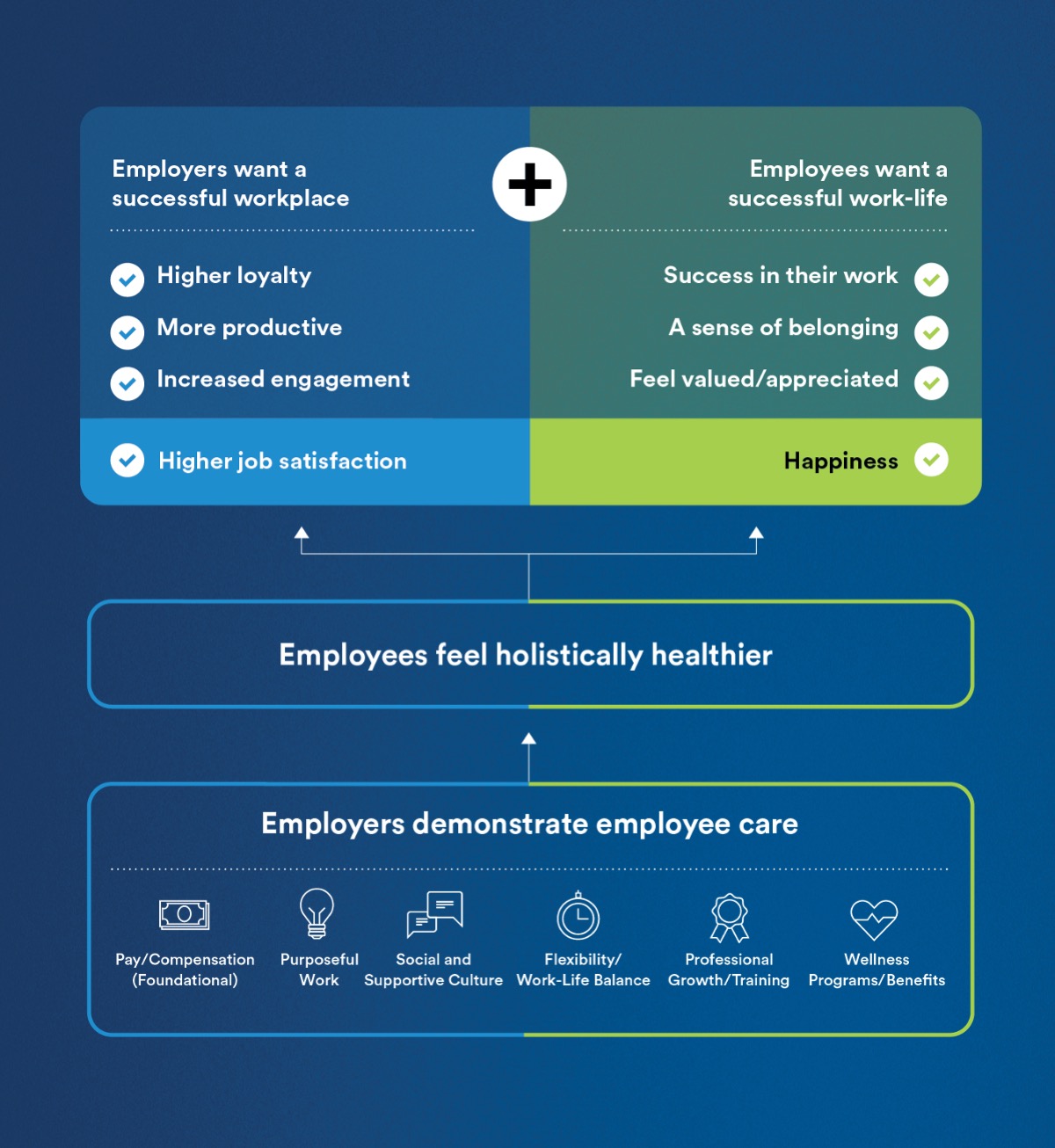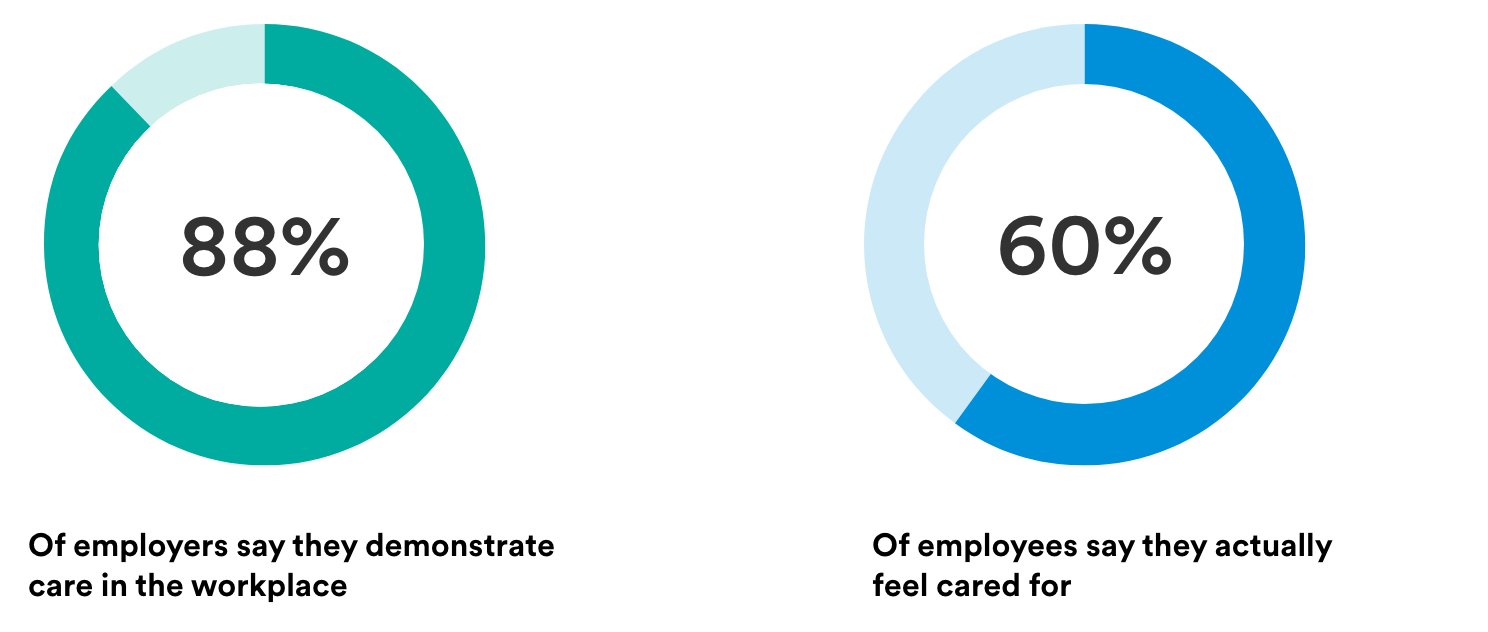ORGANIZATIONAL ADAPTABILITY
As MetLife launches its latest Employee Benefit Trends Study, Todd gave us his thoughts on the changes in employee expectations, why it’s so important for employers to respond, and some of the surprises in the report’s latest findings. One of the longest-running studies of its kind in the industry, the EBTS features more than two decades of insights. In fact, the study has now been around longer than millennials have been in the workforce. We’ve tracked the impact of major technology advancements, recessions and business booms, health crises, and political turmoil the U.S. has encountered. Along the way, we’ve been mapping the state and function of the workplace, and how employee sentiment has been impacted by all of it.
Why Employee Care Must Extend Beyond the Workplace
In 2023, we introduced the concept of employee care — unpacking its profound and measurable impact on key business and employee outcomes — from productivity and engagement to feeling a sense of belonging and value at work. And what we’ve heard from employers is that this concept really resonated.
When we introduced our Employee Care Model last year, it effectively showed a direct correlation between care and key workplace outcomes. Employees who feel cared for indicate that they are holistically healthier. This yields a better employee experience, as well as greater engagement, productivity, and organizational loyalty.
Employee care and the MetLife Care Model

MetLife’s Employee Care Model highlights that when employers demonstrate care across all elements of the employee experience (i.e., pay/compensation, purposeful work, social and supportive cultures, flexibilty/work-life balance, professional growth/training, wellness programs/benefits), employees feel holistically healthier, leading to a successful workplace for employers and a successful work-life for employees.
We also found that to be effective, showing employees that you care must be demonstrated across the full spectrum of their experience, including compensation (which is foundational). So, this year, we intentionally set out to build on the concept of employee care and gain a more comprehensive understanding of it — not only what care is and how it works, but how, when, and where employers can activate it in the workplace.
That’s why this year’s report is titled Maximizing Employee Care: Opportunities for Enhancing Employee Care Delivery Across the Employee Experience. The 2024 EBTS report digs into the concept of employee care more deeply and explores the tangible ways employers can deliver it, how and when it matters most to employees.
Why Employee Care Will Continue to Be a Hot Button Topic in 2024
To understand the reasons, the extraordinary macro environment that today’s employees are operating in must be examined. Employees have always had to continuously balance competing work and life priorities in their microenvironments; that’s not new. But we have to recognize that today’s workforce is also juggling a truly unprecedented array of macro stressors — from inflation and challenges with saving to geopolitical issues and election year anxiety — that not only affect their well-being now but are likely to multiply in the coming years.
It’s also important to recognize that there is a persistent care gap that must be addressed. Despite 88% of employers saying they demonstrate care in the workplace, only 60% of employees say they feel cared for at work. Recognizing that 28% discrepancy is a real opportunity for employers to raise the bar and improve. There were other areas for improvement as well. For example, 41% of employees feel there is a lack of organizational policies that support/promote care and another 38% believe their managers don’t actively implement initiatives to demonstrate care. These are areas companies can actively address.
The Care Gap

88% of employers say they demonstrate care in the workplace, while only 60% of employees say they actually feel cared for.
Expanding on last year’s research, we wanted to ask how employers can effectively build a culture of care in the workplace. We discovered that care which is both always on and delivering in the moments that matter to employees is what’s most important. It’s not just the moments that occur at work employees care about. The vast majority expect their employer to deliver care during their critical moments both at and outside of work. Over 90% of employees want to feel cared for at work, and nearly 80% expect to feel cared for during impactful life moments. In fact, we critically examined 55 of those “moments” — events and activities that span employees’ personal and professional lives. These include expanding families; loss of a loved one; promotions; burnout; unexpected financial stress; and buying your first home, among others.
Big moments matter

79% of employees expect to feel cared for at life’s impactful moments.
We looked at these moments to understand the impact they have on individuals and the level of care they felt from their employer when they occurred.
While employers should continue to optimize existing programs to enhance care delivery, employers should improve, particularly regarding unplanned, challenging, less visible moments requiring more continuous care.
Let’s say an employee experiences an unexpected financial crisis. Employers can best demonstrate caring in the workplace by deploying an empathetic and flexible manager, and helping the employee learn about relevant benefits. When people’s pets are ailing having pet insurance can alleviate some of the financial stress of such episodes. Access to professional counsel can help employees who find themselves in potentially costly legal disputes. The key is effectively communicating the availability of these benefits and how to use them before they’re needed so employees are aware of the care their companies provide.
The Role of Benefit Experiences on Holistic Health
Employers have put in significant effort to curate benefits offerings designed to meet diverse workforce needs. While offering comprehensive voluntary benefit options increases holistic health from 34% to 47%, holistic health can increase to 57% when employees have a great experience utilizing their benefits.
Holistically healthier outcomes

57% of employees feel holistically healthier when the experience of using benefits is a positive one.
According to our research, caring for employees has a big impact on talent management goals. In fact, employees who feel cared for versus those who didn’t feel that way were proved to be more loyal (89% vs. 53%), productive (91% vs. 59%), and engaged (88% vs. 47%). That impact has significant financial implications considering the cost of retaining talent.
Worker expectations are changing constantly due to the complexities of a macroenvironment that is in continuous flux. Taking care of your employees in key moments results in their being more holistically healthy and has measurably positive outcomes for employers. Benefits remain an important element of demonstrating such care and an opportunity to do so when it matters most. Extending employee care into those moments will not only yield a healthier, happier, more productive, and more loyal workforce but is a powerful tool for meeting overall business goals.
All data from this article is from MetLife’s 2024 Employee Benefit Trends Study.
